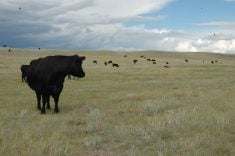John Gavloski is getting a lot of phone calls this spring from canola growers wondering about the effectiveness of insecticide seed treatments to curtail flea beetle damage.
The calls are from growers who are not used to seeing flea beetles nibbling on canola crops where an insecticide seed treatment was used. Gavloski is telling the growers not to be alarmed.
“The seed treatments are working,” said the Manitoba Agriculture entomologist.
“They’re doing what they’re supposed to do.”
Farmers’ uncertainty arises from changes to the insecticides that have been available in recent years.
Read Also

Canada to have increased presence at Agritechnica 2025
Interest in diversifying trade markets is taking more Canadian manufacturers to Agritechnica 2025, the world’s largest machinery show.
Lindane, which was a common way to fight flea beetles before it was withdrawn from the market, stopped the insects from eating canola plants.
However, Gavloski said the new treatments do not work as repellents. Instead, flea beetles feed on the canola seedlings and die after eating a toxic level of the insecticide.
“Growers have to accept the fact there is going to be some minor feeding,” Gavloski said.
John Mayko, a senior agronomist with the Canola Council of Canada, said on May 21 that flea beetle emergence was being reported across the Prairies. Beetles were most widespread in Manitoba, where canola crops generally are furthest advanced.
Mayko said growers should monitor their crops at least every second day and preferably every day in the spring to assess flea beetle damage to cotyledons and the first true leaves of seedlings.
Frequent scouting is especially important for growers who planted seed not treated with an insecticide, he added.
Canola seedlings can withstand up to 50 percent leaf loss, but the canola council recommends a spraying threshold of 25 percent defoliation because of how rapidly the beetles can attack a crop.
Flea beetles tend to invade canola crops from field edges after wintering in adjacent areas such as ditches and sloughs. If spraying thresholds are reached only along the field edges, applying a foliar spray along the edges may adequately protect the crop.
However, the canola council advises growers considering that option to remember how rapidly flea beetles can move into the rest of the crop under favourable conditions.
Gavloski said flea beetles become less of a concern once there are three to four true leaves on the canola plants.
There have also been reports this spring of wireworms and cutworms in southern Alberta and cutworms in Manitoba, Mayko said.














